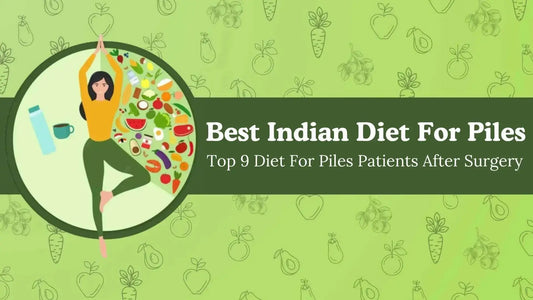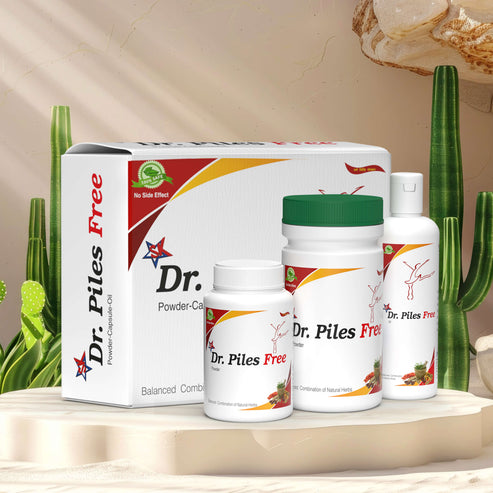
Best Indian Diet For Piles: Top 9 Diet For Piles Patients After Surgery
Acing pile’s extreme pain & discomfort after undergoing piles surgery. Don't worry! follow a healthy and balanced diet for quick recovery. Below we mentioned the Indian diet chart for piles patients to reduce pain during bowel movement.
In India, where spices, fried foods, and heavy meals are common, it becomes necessary to make dietary changes to avoid constipation. To reduce the risk of recurrence and promote better digestion, we will discuss the top 9 diet options in the Indian diet after piles surgery chart that can foster healing and provide comfort. These foods will not only foster healing but also act as effective piles remedies.
Top 9 Diet for Piles Patients After Surgery
If you're thinking about what food to eat after piles surgery, then we have given detailed information from breakfast to dinner:
1. Breakfast: High-Fiber Vegetables
Including high-fiber foods or vegetables in your breakfast can significantly prevent constipation and promote easy bowel movements. Fiber helps in adding bulk to the stool and softening it, reducing the strain during defecation.
High-Fiber Vegetables to Eat:
-
Spinach
-
Carrots
-
Beetroot
-
Broccoli
-
Cabbage
-
Bottle Gourd (Lauki)
-
Pumpkin
Avoid: Spicy and oily vegetable preparations as they can trigger constipation.
2. Mid-Morning/Brunch
Fruits are naturally rich in fiber and water, which makes digestion smooth and prevents constipation. Consuming fruits post piles surgery can promote easy bowel movements and reduce pain.
Fruits Rich in Fiber and Water Content to Eat:
-
Bananas
-
Papaya
-
Apples (with skin)
-
Oranges
-
Pears
-
Watermelon
-
Grapes
Avoid: Unripe fruits or fried fruit items.
3. Lunch
Whole grains are another excellent source of dietary fiber and can improve your digestion. Including whole grains in your lunch can help ensure soft stools and smooth bowel movements.
Best Whole Grains to Eat:
-
Brown Rice
-
Whole Wheat Bread
-
Oats
-
Millets
-
Quinoa
Avoid: White rice, refined flour (maida), and processed foods.
4. Throughout the Day
A poor diet and dehydration are common piles causes, leading to constipation and discomfort. Drinking enough water and healthy fluids helps in softening the stool and making bowel movements painless.
Best Fluids to Drink:
-
Plain water (at least 8-10 glasses daily)
-
Coconut water
-
Fresh fruit juices (without sugar)
-
Lemon water
-
Buttermilk
Avoid: Carbonated drinks, packed juices, alcohol, and caffeine.
5. Lunch/Dinner: Pulses and Lentils
Pulses and lentils are excellent sources of protein, fiber, and essential nutrients that can help in healing after surgery. They also promote easy digestion and reduce the chances of constipation.
Best Pulses to Eat:
-
Moong Dal
-
Masoor Dal
-
Chana Dal
-
Arhar Dal
Avoid: Excessively fried or spicy dal preparations.
6. Evening
Since the digestive system becomes sensitive after piles surgery, it is necessary to consume soft and easily digestible foods.
Best Foods to Eat:
-
Khichdi (without spices)
-
Plain Dalia
-
Soft Idli
-
Boiled Vegetables
-
Soft Rotis
Avoid: Fried or processed foods.
7. Before Dinner
Certain natural foods can act as stool softeners, ensuring that bowel movements are smooth and painless after surgery.
Best Stool Softeners:
-
Papaya
-
Isabgol (Psyllium Husk)
-
Aloe Vera Juice
-
Chia Seeds
-
Flax Seeds
Avoid: Dry and hard foods.
8. Dinner:
Probiotics improve gut health and ensure easy digestion. Consuming probiotic-rich foods during dinner can enhance digestion and prevent constipation.
Best Probiotic Foods:
-
Curd
-
Buttermilk
-
Fermented Foods
-
Pickles (less spicy)
Avoid: Artificially flavored curds or packed probiotic drinks.
9 Late Evening: Avoid Constipating and Spicy Foods
After piles surgery, it is crucial to avoid foods that can lead to constipation, irritation, or inflammation.
Foods to Avoid:
-
Red meat
-
Deep-fried foods
-
Spicy curries
-
Packaged snacks
-
Alcohol
-
Coffee/Tea (in excess)
Why Is Diet Important After Piles Surgery?
After undergoing piles surgery, your body needs proper care and a healthy diet to heal faster. A high-fiber and easy-to-digest diet can help in:
-
Preventing constipation
-
Softening stool
-
Reducing pain during bowel movements
-
Promoting wound healing
-
Preventing the recurrence of piles
A wrong diet after surgery can worsen the condition, delay recovery, and increase the chances of piles coming back. Different types of hemorrhoids require different care and prevention, but maintaining a balanced diet is important not only for hemorrhoid recovery but also for your overall health.
Also, along with a healthy diet for hemorrhoids, including herbs that are effective for hemorrhoids such as psyllium, aloe vera, and flax seeds can provide additional benefits.
You can also include Ayurvedic medicines for piles in your lifestyle to overcome the problem of piles naturally.
Conclusion
Following a healthy and balanced diet after piles surgery is crucial for quick recovery, pain-free bowel movements, and reducing the risk of recurrence. Including high-fiber foods, plenty of fluids, and easily digestible meals can help you heal faster and avoid constipation.
If you are still experiencing pain, discomfort, or difficulty after surgery, consult your doctor immediately. Taking care of your diet and following the right post-surgery dietary practices can significantly improve your recovery and overall health.
References
Dharashivkar, S., Gaikwad, M., Warghade, G., & Ghude, T. (n.d.). Role of dietary fiber in gut health. In Advances in Food Science and Nutrition (Chap. 7). Taylor & Francis. https://doi.org/10.1201/9781003386308-7
Krishnan, S. (2016). A study on the dietary habits and their association with the symptoms in patients with hemorrhoids and fissure-in-ano (Publication No. 30588442) [Doctoral dissertation, Rajiv Gandhi University of Health Sciences]. ProQuest. https://www.proquest.com/openview/668334e0b26ddb969ede439c5603138b/1?cbl=2026366&diss=y&pq-origsite=gscholar

Dr. Pooja Verma
Dr. Pooja Verma is a sincere General Ayurvedic Physician who holds a BAMS degree with an interest in healing people holistically. She makes tailor-made treatment plans for a patient based on the blend of Ayurveda and modern science. She specializes in the treatment of diabetes, joint pains, arthritis, piles, and age-related mobility issues.




